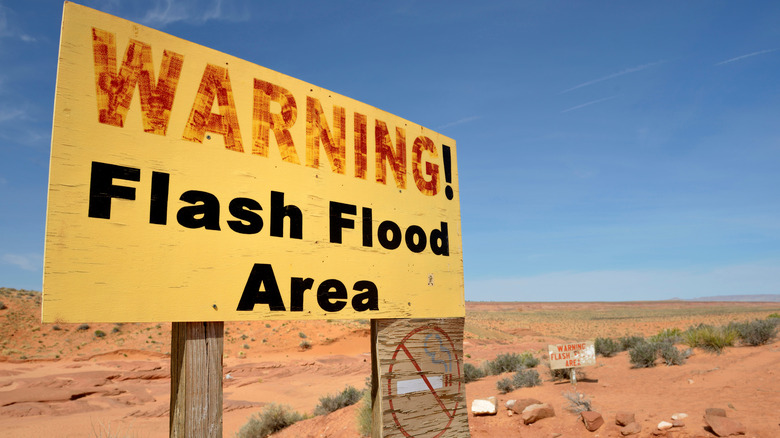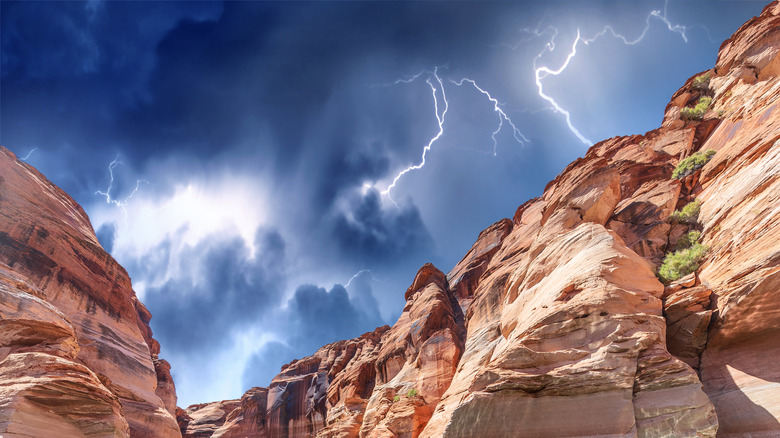Arizona is synonymous with canyons in many people’s minds. Besides the world-renowned Grand Canyon, Arizona boasts other amazing canyons both large and small — Sabino Canyon in Tucson, the Salt River Canyon near Phoenix, Canyon de Chelly in the northeast, and the list goes on. But no list of the state’s impressive canyons would be complete without mention of the one-of-a-kind Antelope Canyon, which feeds into Lake Powell near the Arizona-Utah border. Because of its otherworldly beauty and the fact that it’s easily accessible by walking, Antelope Canyon has become the most visited slot canyon in the American Southwest.
The narrow, winding canyon is known for its curvy walls that filter sunbeams, which spectacularly illuminate the scarlet and orange hues in the sandstone. Walking through the chasm is like attending a live art show, with each twist and turn in the path revealing a new configuration of rock, color, light, and shadow. But the forces that created this earthly masterpiece are precisely the same ones that make it so unpredictable and dangerous.
When slot canyons become death traps

The Navajo consider Antelope Canyon a sacred site, calling it Tsé Bighánílíní, which means “the place where water runs through rocks” in the Navajo language. This is in reference to the powerful floods that have occurred here regularly over thousands of years, which have carved and texturized the canyon’s walls while passing through it with a terrifying force. The visual results are clearly magnificent, but you don’t want to be caught in the canyon during a flash flood. The problem is that they can occur in Antelope Canyon (and other canyons) without warning, trapping those who have traveled away from canyon entry and exit points, with potentially dire consequences.
On August 12, 1997 this is exactly what happened. Twelve people were exploring Antelope Canyon when suddenly, an 11-foot wall of water descended upon them, sweeping all but one of them to their deaths. The group had been taken by surprise, as not a single drop of rain was falling on them at the time of the flood. Rather, a monsoon thunderstorm happening 15 miles away produced runoff that filled upper portions of the chute, sending muddy liquid and debris towards the unsuspecting tourists like a speeding freight train.
Visiting Arizona’s canyons safely

The 1997 Antelope Canyon tragedy was a giant wake-up call for canyon lovers everywhere, demonstrating that you can actually drown in the desert if you fail to take the proper precautions. Since the disaster, Antelope Canyon tour operators have improved safety features and tightened regulations. Ladders and stairways in the canyon are now securely attached to the wall to provide stable exit points in case of flooding. In addition, visitors must now be accompanied by a local guide who is knowledgeable about the region and its hazards.
Even when traveling with a guide, all canyon visitors should be informed about risks, especially when touring the Glen Canyon, Marble Canyon, and Grand Canyon areas. Know that while flash floods can occur any time of year, risks increase during monsoon season, which runs from July through the end of September. Most importantly, don’t underestimate the power of flash floods. A mere six inches of swiftly moving water can knock a person off their feet, and it doesn’t take much more than that to sweep away a vehicle. Be informed and stay safe while exploring Arizona’s magnificent canyons.

